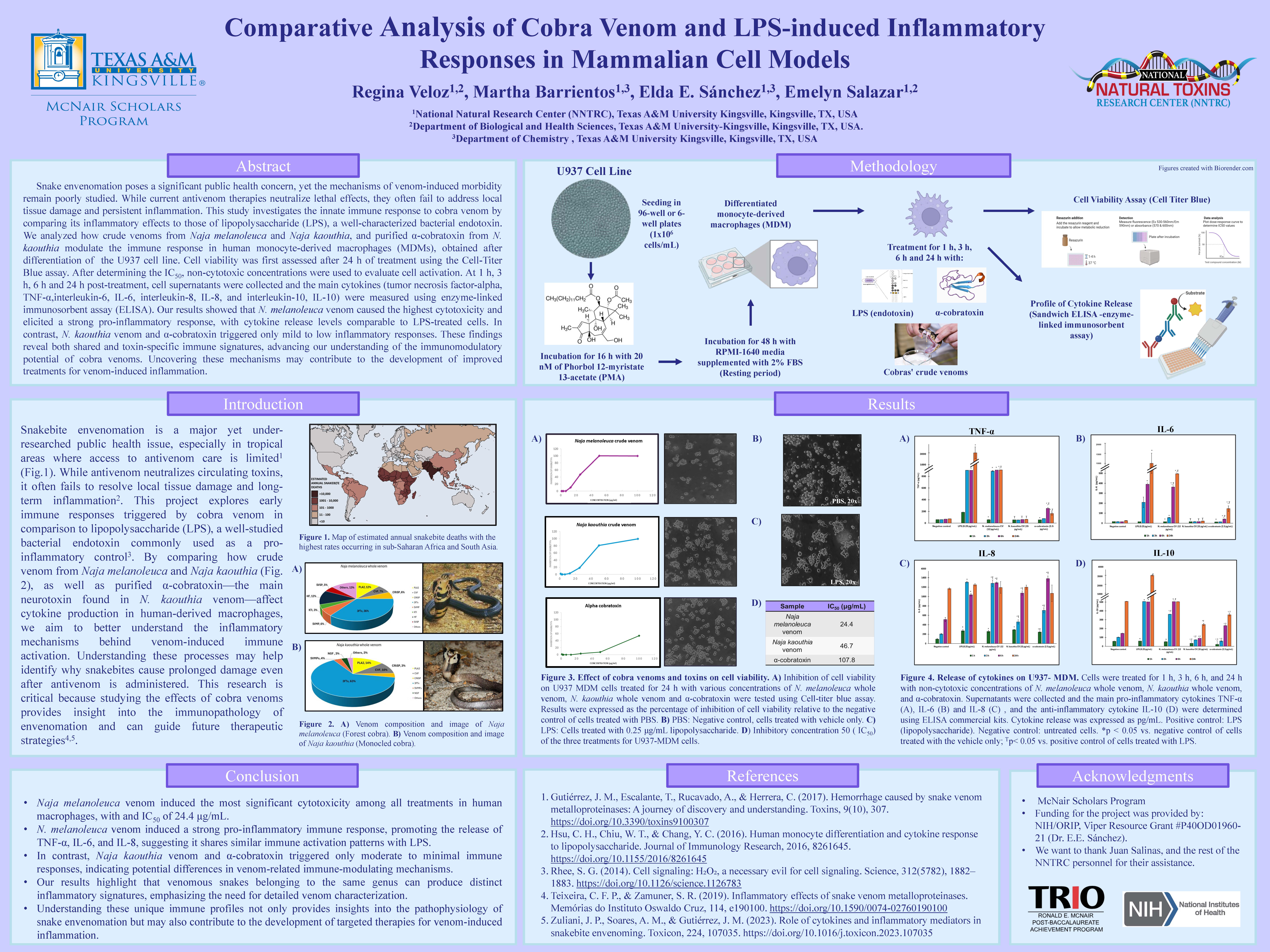Snake envenomation poses a significant public health concern, yet the mechanisms of venom-induced morbidity remain poorly studied. While current antivenom therapies neutralize lethal effects, they often fail to address local tissue damage and persistent inflammation. This study investigates the innate immune response to cobra venom by comparing its inflammatory impacts to those of lipopolysaccharide (LPS), a well-characterized bacterial endotoxin. We analyzed how crude venoms from Naja melanoleuca and Naja kaouthia, and purified α-cobratoxin from N. kaouthia modulate the immune response in human monocyte-derived macrophages (MDMs), obtained after differentiation of the U937 cell line. Cell viability was first assessed after 24 h of treatment using the Cell-Titer Blue assay. After determining the IC50, non-cytotoxic concentrations were used to evaluate cell activation. At 1 h, 3 h, 6 h, and 24 h post-treatment, cell supernatants were collected, and the main cytokines (tumor necrosis factor-alpha, TNF-α, interleukin-6, IL-6, interleukin-8, IL-8, and interleukin-10, IL-10) were measured using enzyme-linked immunosorbent assay (ELISA). Our results showed that N. melanoleuca venom caused the highest cytotoxicity and elicited a strong pro-inflammatory response, with cytokine release levels comparable to LPS-treated cells. In contrast, N. kaouthia venom and α-cobratoxin triggered only mild to low inflammatory responses. These findings reveal both shared and toxin-specific immune signatures, advancing our understanding of the immunomodulatory potential of cobra venoms. Uncovering these mechanisms may contribute to the development of improved treatments for venom-induced inflammation.
Faculty Mentor: Dr. Emelyn Salazar Castillo
National Natural Toxins Research Center


